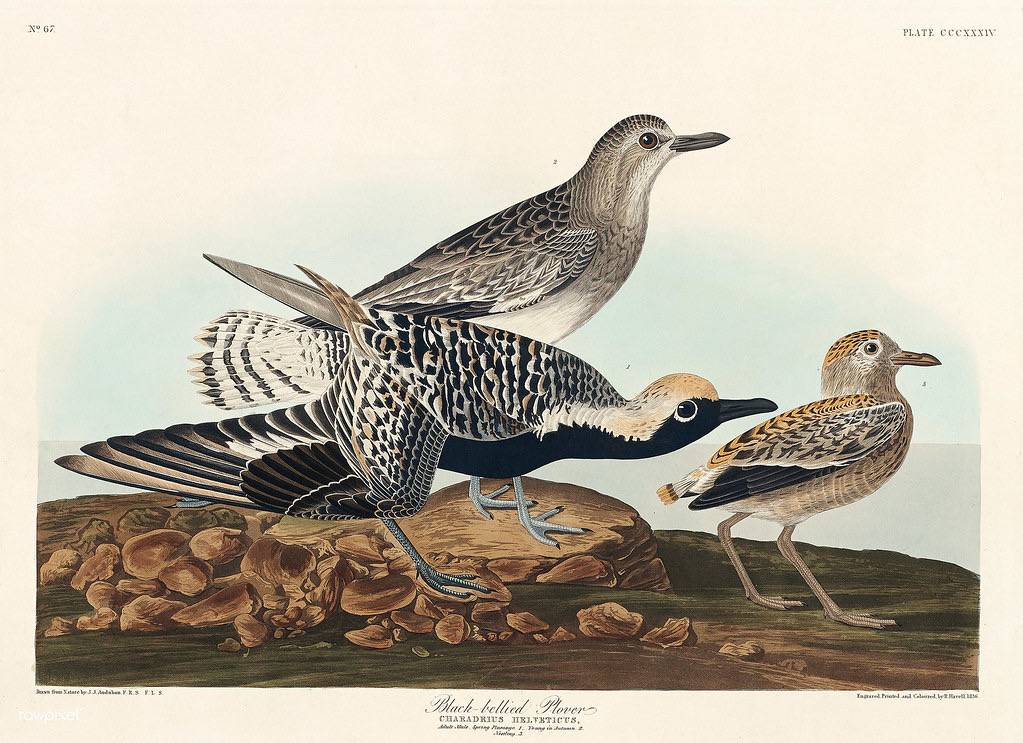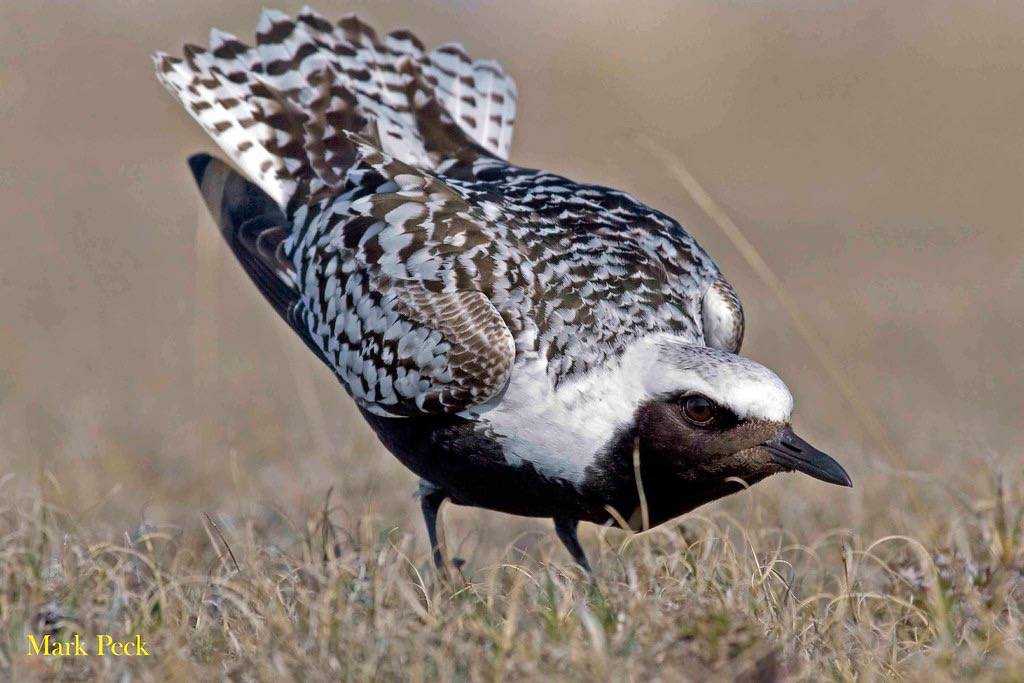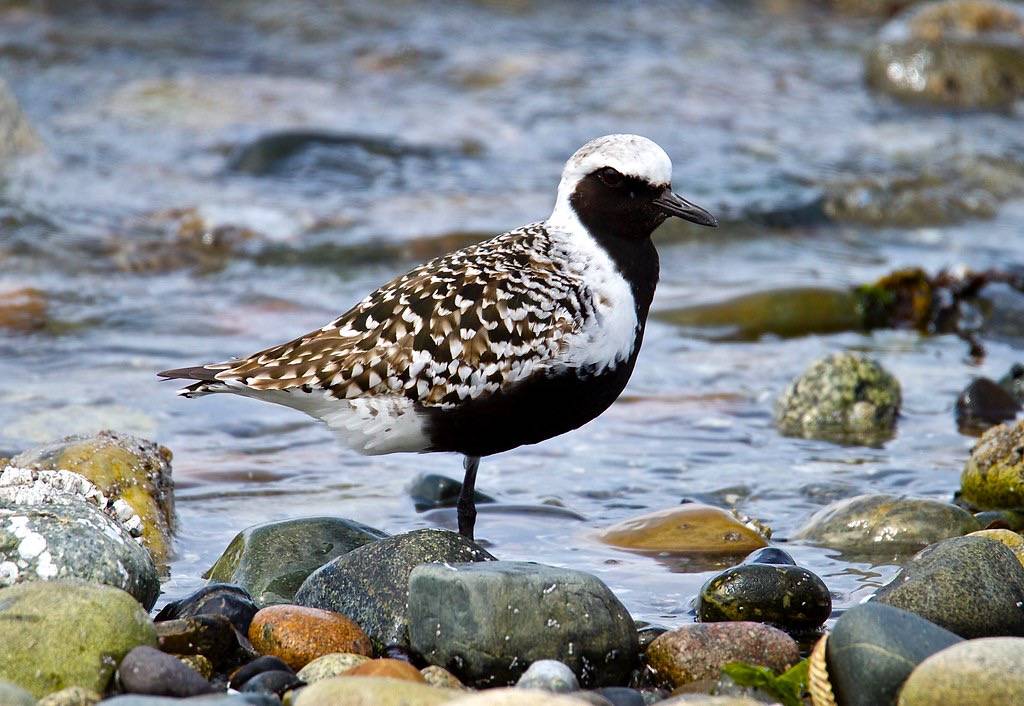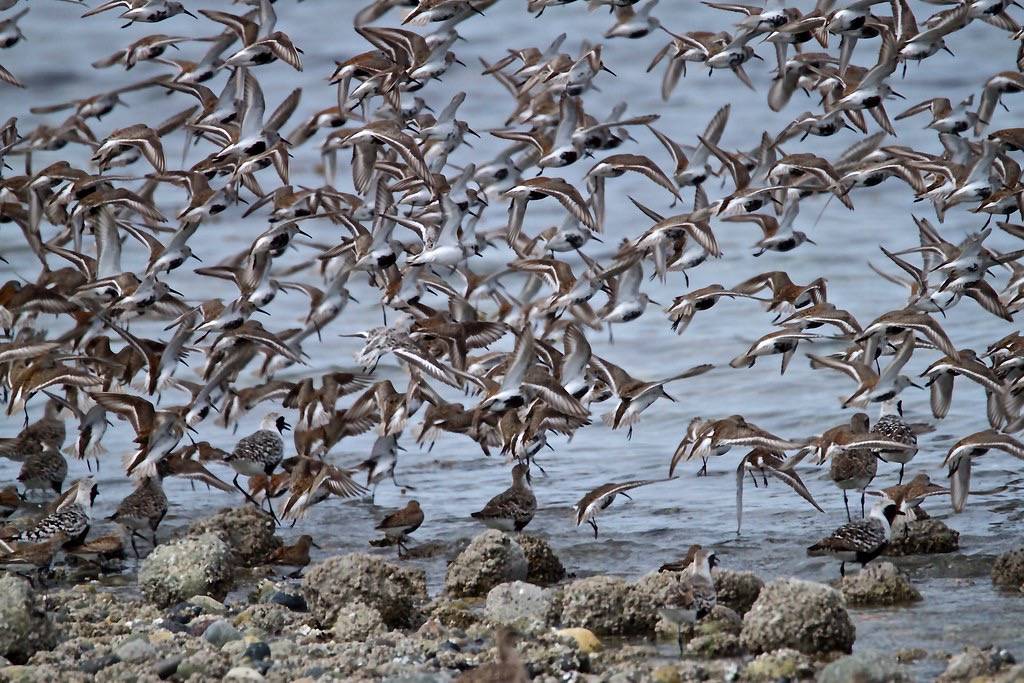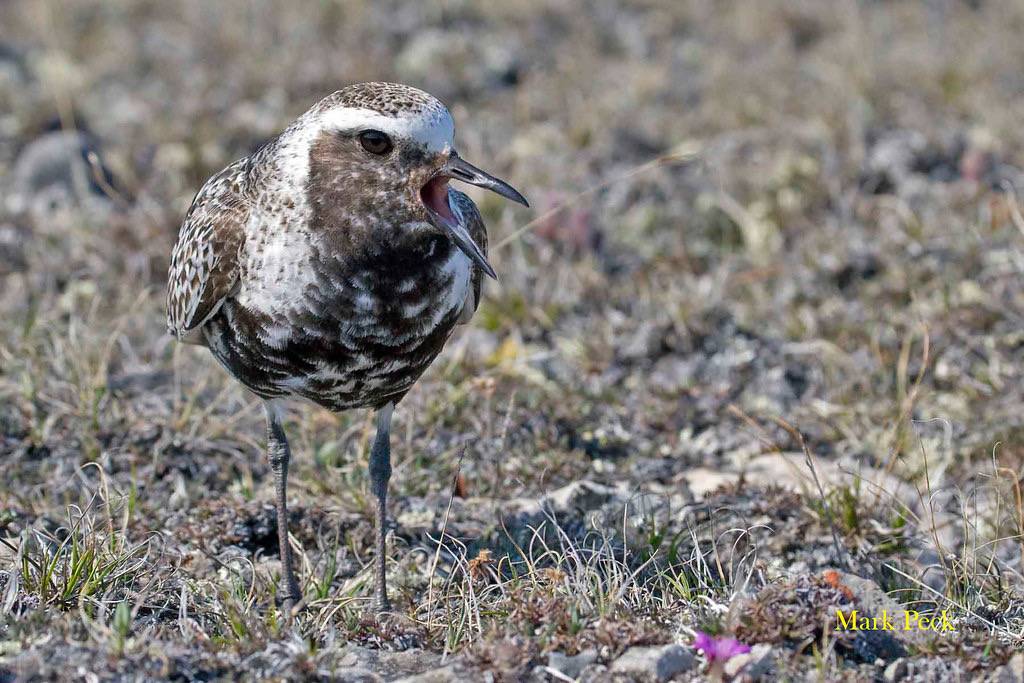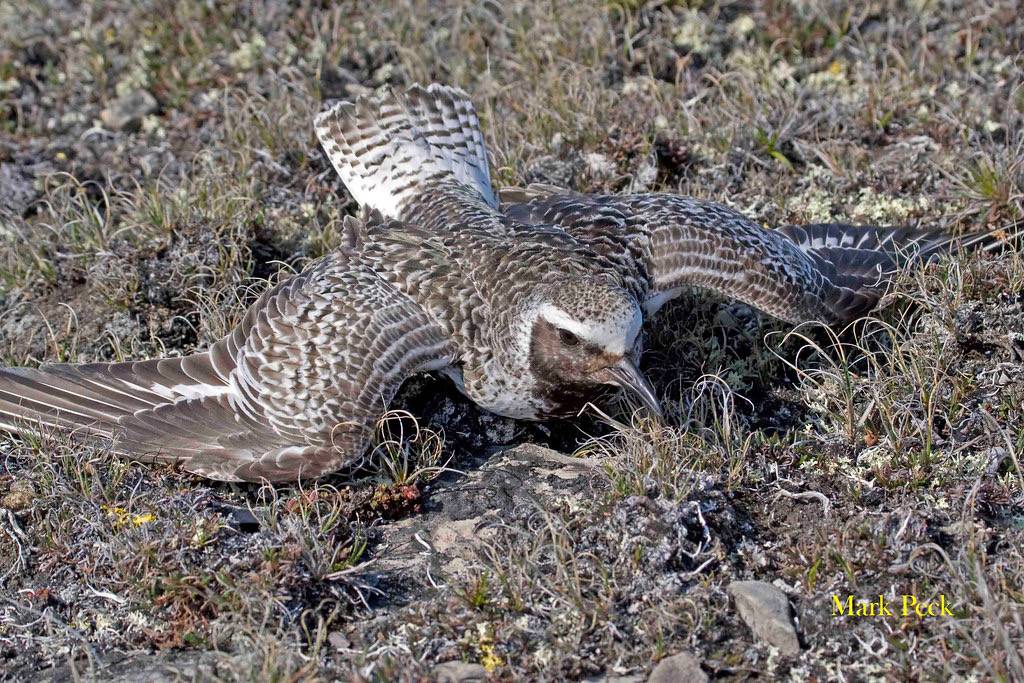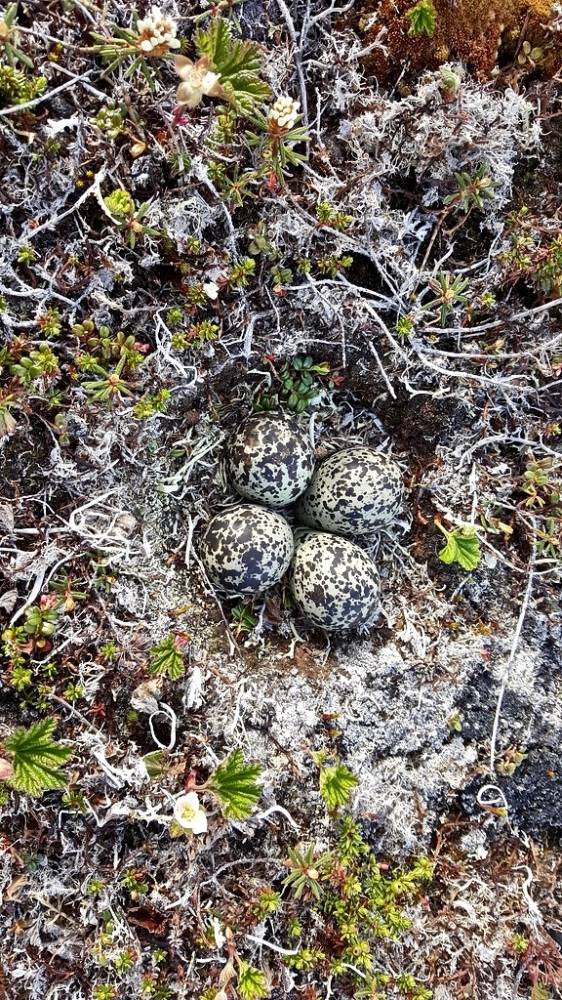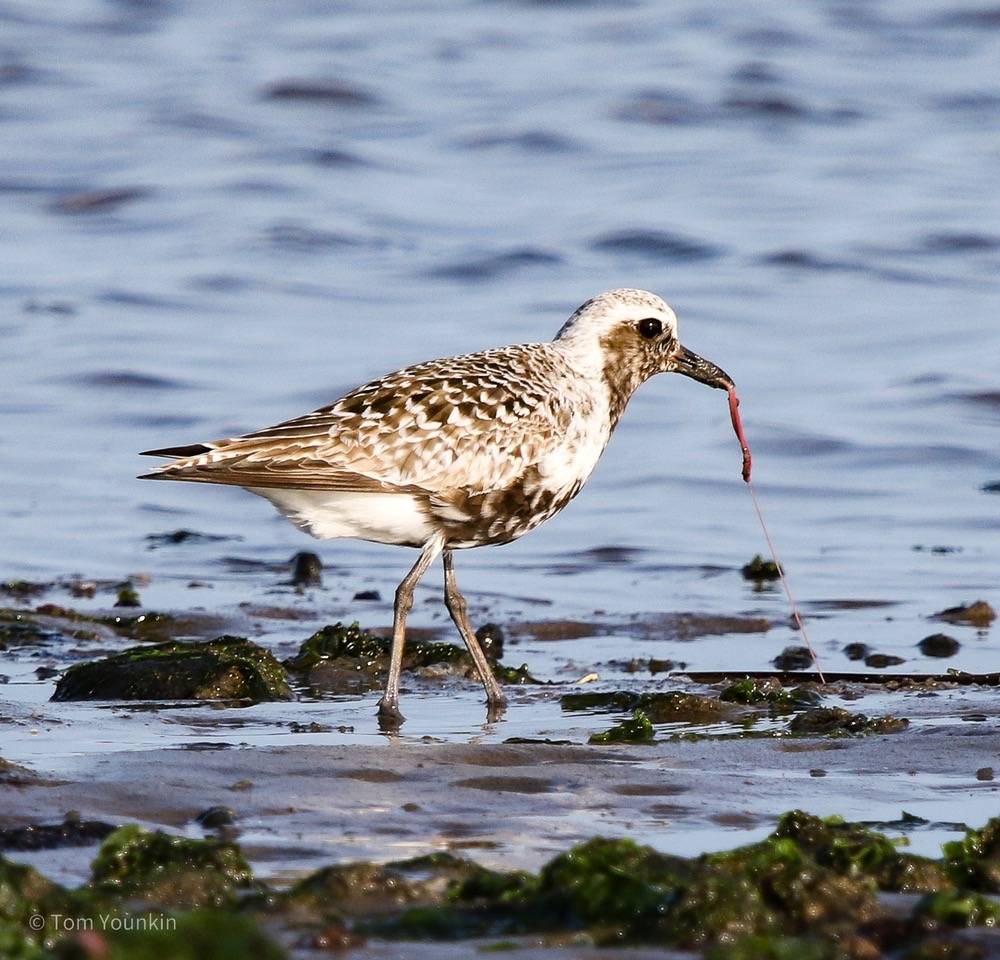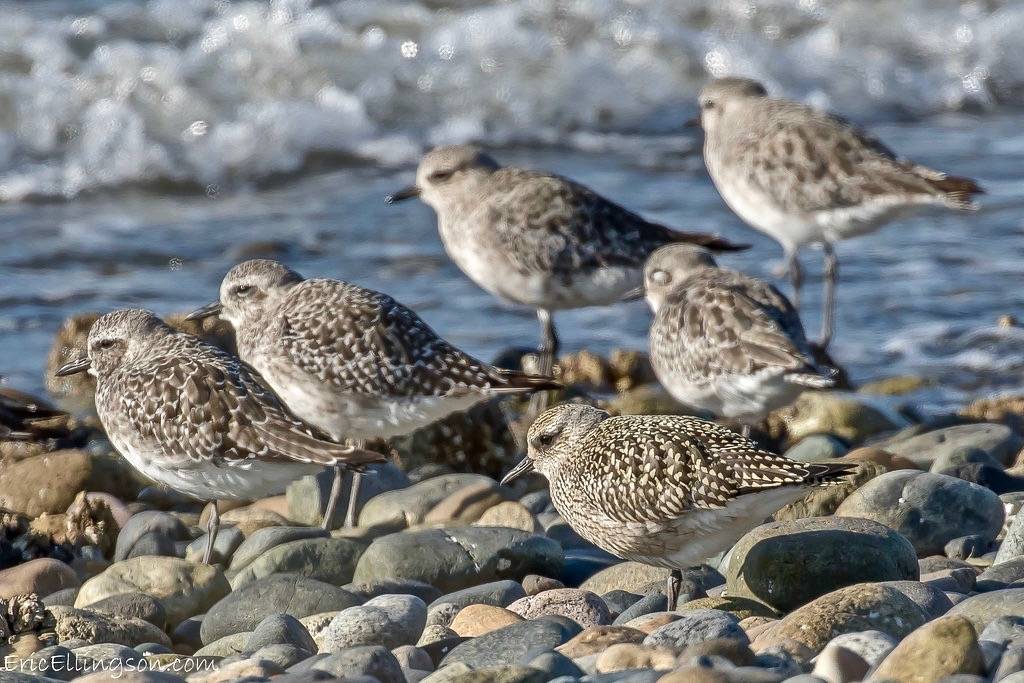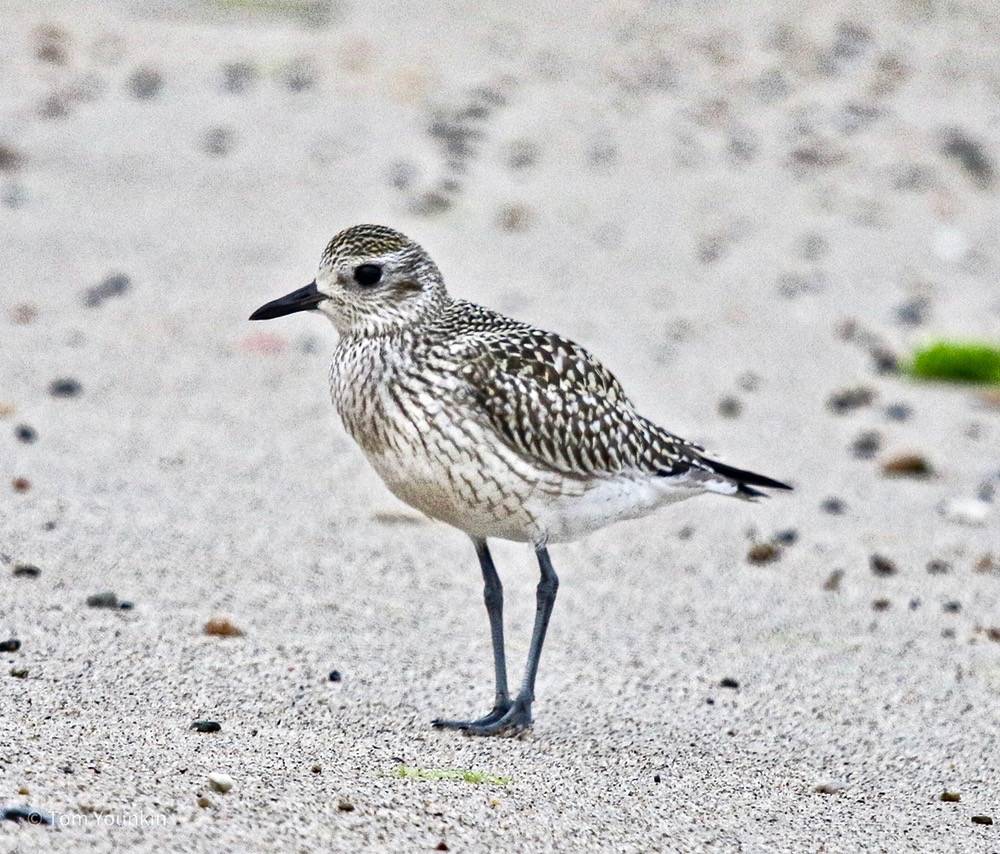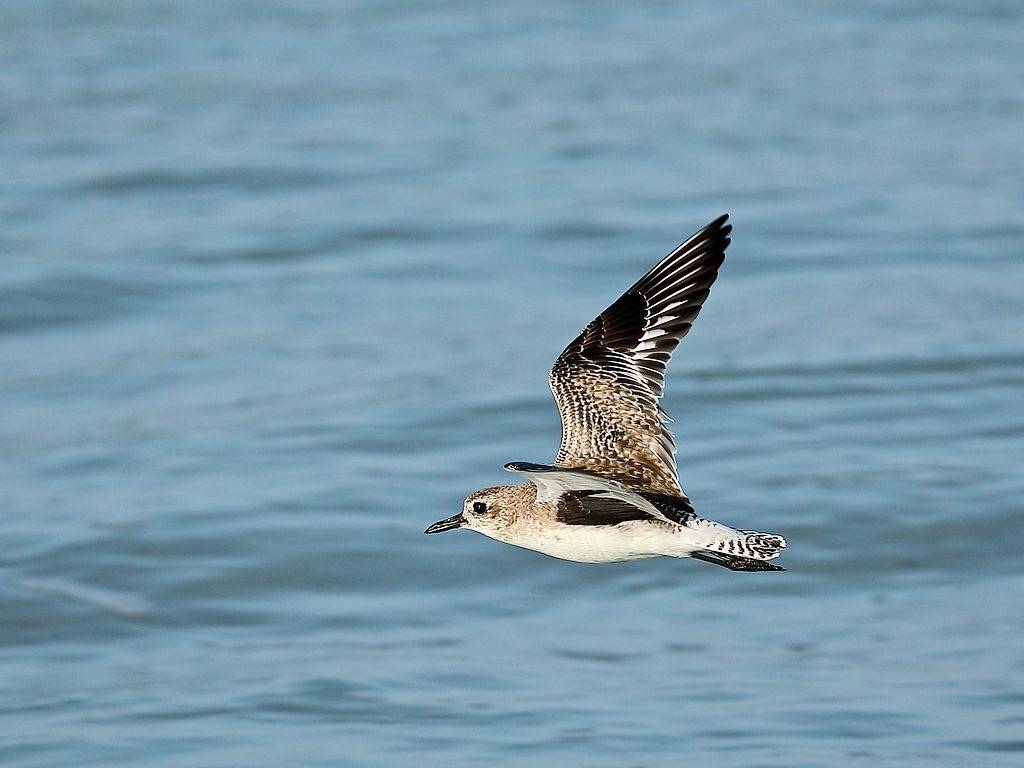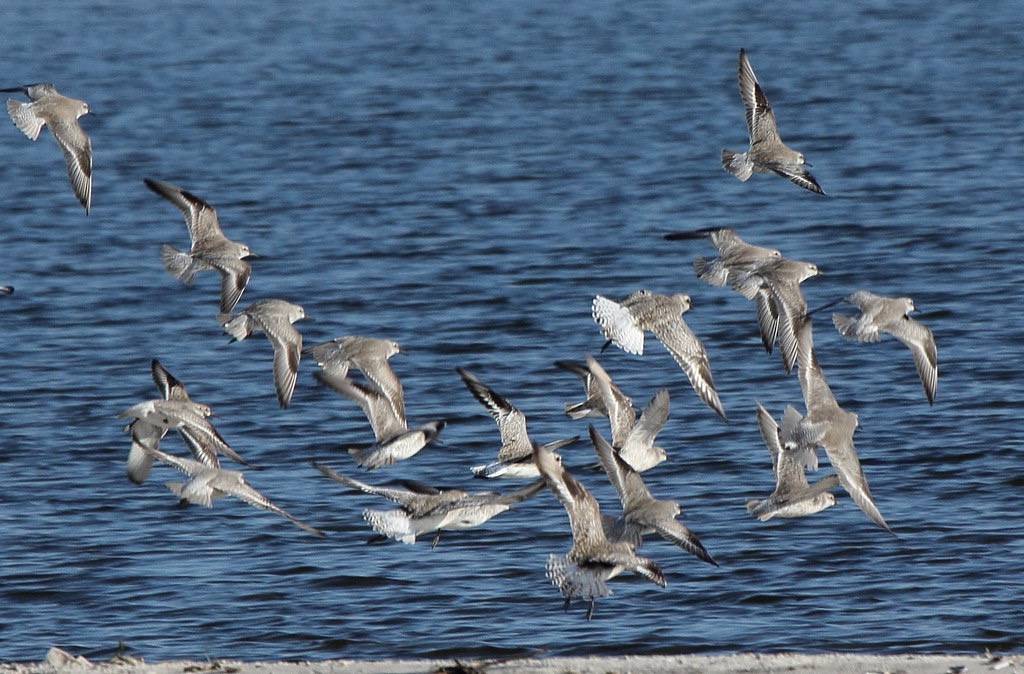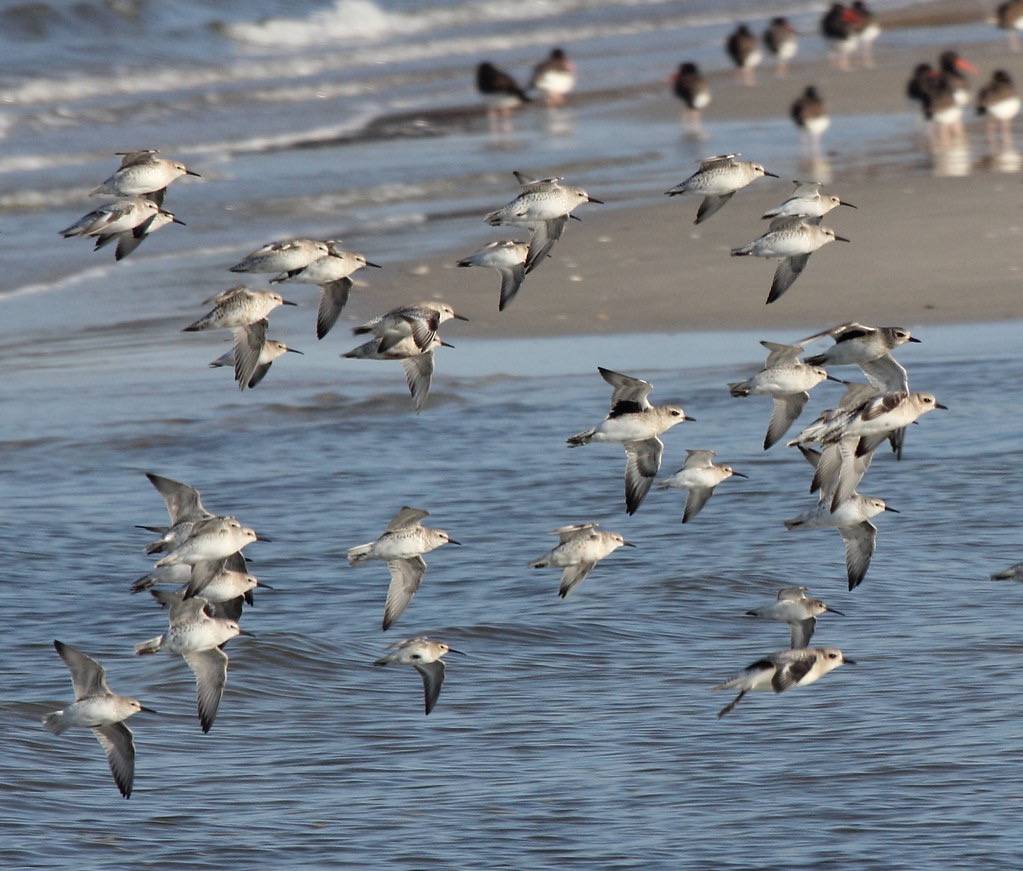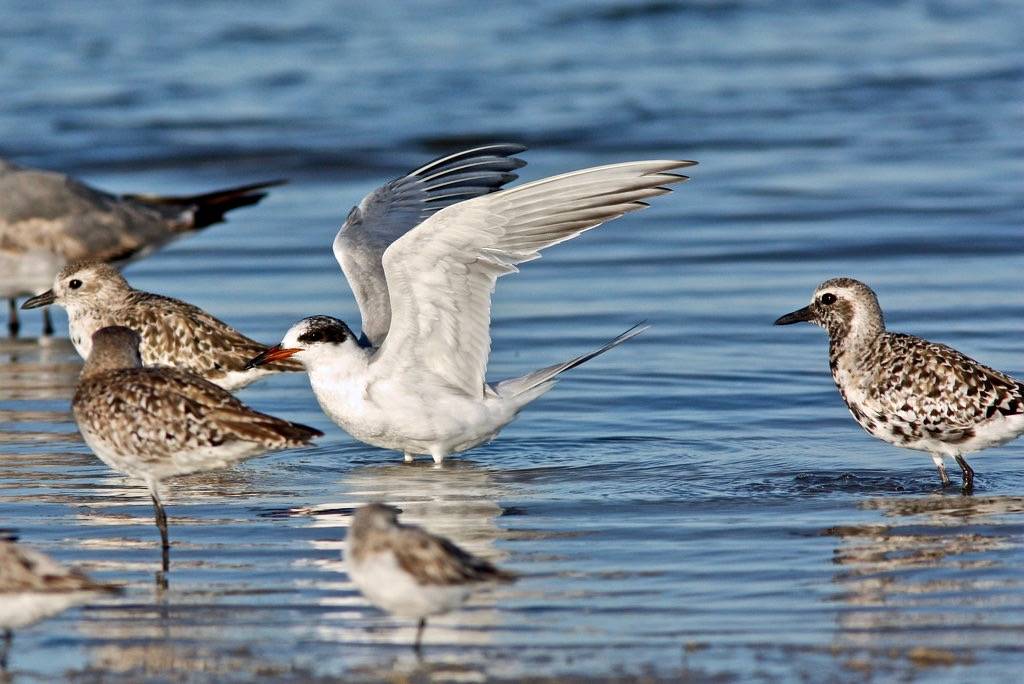Black-bellied Plover
The Black-bellied Plover was first seen on the rocky islets south of Rock Island in late May 2019. This stocky shorebird has a short stout bill and is slightly larger than the American Robin. The pair of plovers observed was no doubt resting at Salter Grove before continuing the long northward journey to their Arctic breeding ground.
Black-bellied Plovers arrive just as insects become abundant in the large pools of water formed by melting ice and snow. Their breeding season lasts all of two months on tundra along the northern coasts of Alaska, Canada and Russia. Both parents and fledged young also depend on the flush of insects to gain from one-third to one-half of their body weight to prepare for the southward migration.
This long-distance migrant flies over land and water. Satellite tracking data observed that one Black-bellied Plover flew non-stop over water from Newfoundland, Canada to the coast of Brazil for a distance of over 4,000 miles! It tends to cover shorter distances when migrating over land and will stop to refuel when possible
Wintering grounds of the Black-bellied Plover include the temperate, subtropical, and tropical coastal habitats of six continents. Instead of insects, there are abundant marine invertebrates such as bivalves (clams and mussels), crabs, marine worms, shrimp, and snails. Feeding activity intensifies in April to store enough energy for the trip back to the Arctic breeding grounds.

